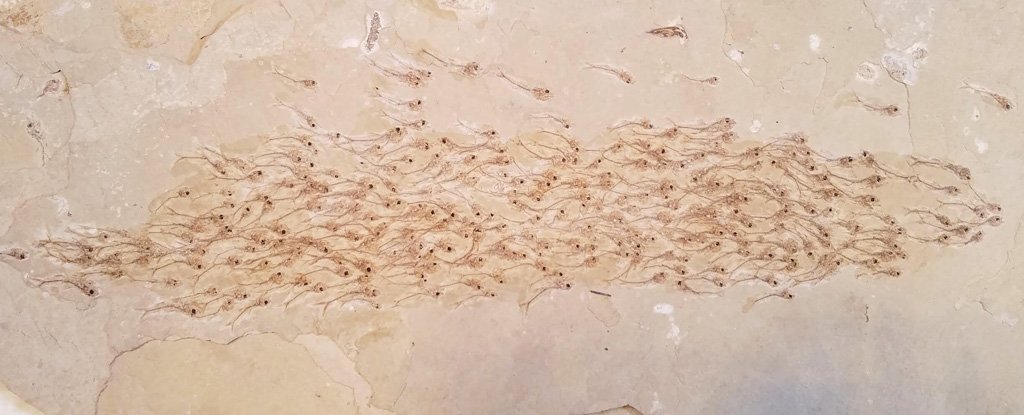For a species as young and puny as humans, every ancient
fossil is a most extraordinary gift from our planet's vast history. Even so,
this 50-million-year-old bunch of dead fish might just be the coolest fossil
we've ever seen.
An unassuming slab of limestone from the Green River
Formation in North America became the final resting place of not one, not two,
but a whopping 259 fish of the extinct Erismatopterus levatus species.
We don't know how they all got flattened so suddenly, but
researchers from Arizona State University and Mizuta Memorial Museum in Japan
hypothesise that a sand dune in shallow water could have collapsed right on top
of the tiny creatures.
These fish used to live in the Green River region's mountain
lakes during the Eocene, which occurred 56 to 34 million years ago. An adult E.
levatus should be roughly 6.5 cm long (2.5 in), but these were babies - many of
the pipsqueaks barely exceed 20 millimetres.
No matter how tiny the fish are, though, for scientists the
finding is still huge. Fossils are a beautiful glimpse into Earth's living
past, but they rarely give us a sense of how ancient animals behaved, or how
their behaviours may have changed over time.
In this case, it's one thing to assume fish have been
banding together into shoals for a long time – but it's a different thing
altogether to see proof of this ancient behaviour, perfectly frozen in stone.
Jumping on this rare opportunity to examine the schooling
movements of a long-lost species, the team measured each and every tiny fish,
mapped their positions, and ran 1,000 different simulations of the shoal's
movement.
The discovery reveals that fish really have schooled
together for at least 50 million years. What's even more fascinating is that
the species that do it today are evolutionarily distinct from these Eocene
fish.
Still, much like many fish living in the world now, these
tiny swimmers were probably trying to reduce their chances of being swallowed
by a predator - until a sudden tragedy swallowed them all at once.
The finding was published in Proceedings of the RoyalSociety B.

Comments
Post a Comment